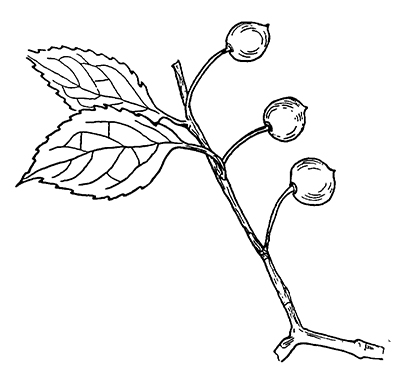Intro to Trees of Indiana: Hackberry
The classic and trusted book "Fifty Common Trees of Indiana" by T.E. Shaw was published in 1956 as a user-friendly guide to local species. Nearly 70 years later, the publication has been updated through a joint effort by the Purdue Department of Forestry and Natural Resources, Indiana 4-H, and the Indiana Department of Natural Resources, and reintroduced as "An Introduction to Trees of Indiana."
A printed copy of the full publication is available for purchase for $7 in the Purdue Extension Education Store. The field guide helps identify common Indiana woodlot trees.
Each week, the Intro to Trees of Indiana web series will offer a sneak peek at one species from the book, paired with an ID That Tree video from Purdue Extension forester Lenny Farlee to help visualize each species as it stands in the woods. Threats to species health as well as also insight into the wood provided by the species, will be provided through additional resources as well as the Hardwoods of the Central Midwest exhibit of the Purdue Arboretum, if available.
 This week, we introduce the hackberry or Celtis occidentalis.
This week, we introduce the hackberry or Celtis occidentalis.
This species is easily identified by its single-tooth margined leaves, which are lopsided with one side slightly higher than the other at the base of the twig. The gray, ashy bark is often warty/bumpy with smooth spots in between, although it may be fairly smooth like beech with warts and ridges spaced throughout. Many hackberries have clumps of distorted twigs in their tops call witch’s brooms. The fruit of the hackberry are small hard black berries, which are favored by birds.
The leaves of hackberry may be confused with elm at first glance, due to their sandpapery texture, but elms have doubly toothed margins with smaller teeth on top of the large teeth, unlike the single tooth appearance of hackberry. The leaves are often deteriorating late in the growing season after being attacked by a variety of insects.
Hackberry is often found along fence rows and field edges, but also may be found in the interior woodlands. This species prefers moist, well-drained soils, but will row on limestone outcrops and other droughty areas. It is native to the Midwest and upper eastern United States, ranging from the Great Plains to the east coast and from the Great Lakes states to central Tennessee and Arkansas.
According to Morton Arboretum, the hackberry grows to between 40 and 60 feet tall.
 Hackberry is used for inexpensive furniture, upholstered frames and millwork. This species is also is commonly used as firewood and in the wood pallet and blocking industry.
Hackberry is used for inexpensive furniture, upholstered frames and millwork. This species is also is commonly used as firewood and in the wood pallet and blocking industry.
In the past, it was also used for container veneer. Hackberry also was valued among Native Americans for medicinal, food and ceremonial purposes. For ceremonies, hackberry was used as the fuel source for the altar fire.
Hackberry wood weighs 37 pounds per cubic foot. The wood tends to bend relatively easily before it reaches its breaking point. In a study of 25 North American hardwoods, hackberry gave the best results in steam bending.
Other Resources:
- Hackberry in Hardwoods of the Midwest
- Hackberry in the Hardwood Lumber and Veneer Series
- Why is my hackberry tree losing leaves?
- Purdue Plant Doctor
- Native Trees of the Midwest
- Shrubs and Woody Vines of Indiana and the Midwest
- ID That Tree YouTube playlist
- Woodland Management Moment YouTube playlist
- Investing in Indiana Woodlands
- Forest Improvement Handbook






